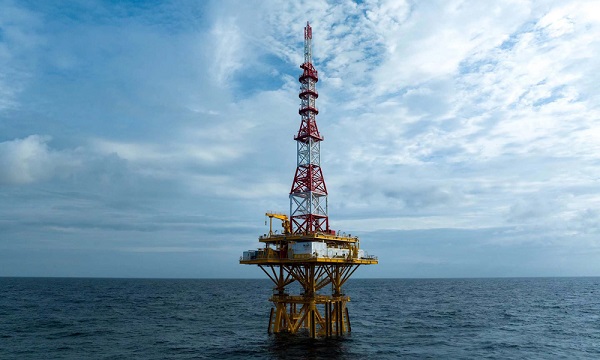
Offshore installation of China's first multi-tiered stereoscopic tower base observation platform, which was undertaken by Offshore Oil Engineering Co., Ltd., a subsidiary of China National Offshore Oil Corporation, was recently completed in the waters off Zhoushan. Once operational, this platform is poised to provide comprehensive, accurate, and real-time marine big data services for research on marine climate change, marine disaster forecasting, and marine economic development. The picture shows the multi-tiered stereoscopic tower base observation platform standing in the waters off Zhoushan after installation. [Photo/sasac.gov.cn]
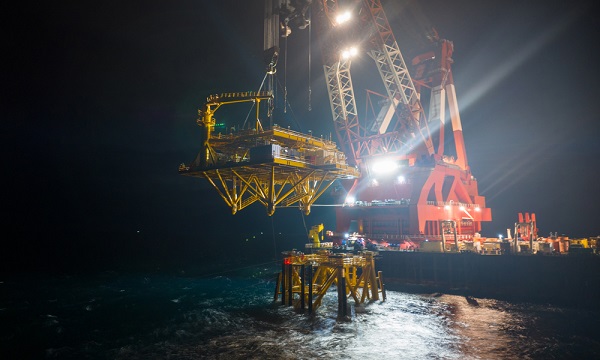
The observation platform is capable of conducting all-round, comprehensive, real-time high-resolution observations of the atmosphere, hydrosphere, and lithosphere, ensuring comprehensive monitoring of the marine environment. Comprising three main components — the jacket, module, and wind measuring tower — the observation structure weighs 4,530 tons and sits 103 meters above sea level, equivalent to almost 37 stories in height. It is located about 90 kilometers offshore and submerged in waters about 65 meters deep, and will serve the challenging typhoon-prone environment in the Zhoushan Sea over its design life of 30 years. The picture shows the vessel Blue Whale working on installation of observation platform modules. [Photo/sasac.gov.cn]
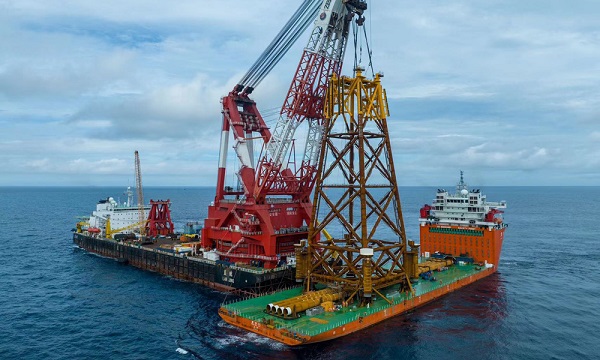
The precision installation of the observation platform to its designated coordinates in short time presented formidable challenges in terms of hoisting operations and on-site command. Given the unique structure of the platform and the complex hydrodynamic conditions in the installation area, the project team used the cutting-edge marine engineering vessel Blue Whale for the task. As the jacket features a hoisting weight of 2,080 tons and a height of 77.7 meters, the operation method of vertical lifting and vertical lowering was adopted. It took only half a day for the Blue Whale vessel to complete the installation. The picture shows the Blue Whale completing accurate positioning of the jacket. [Photo/sasac.gov.cn]
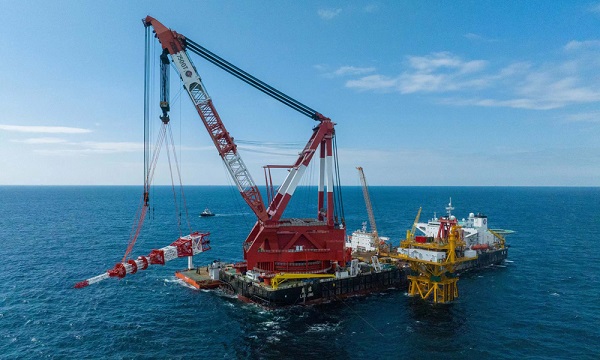
For the wind measuring tower with a weight of 76.8 meters, the Blue Whale adopted a horizontal lifting and mid-air rotation operation method. Through a combination of multiple sets of rigging, the wind measuring tower was placed on the middle module after completing a 90-degree rotation in both horizontal and vertical directions. The successful hoisting of the jacket and wind measuring tower represents a remarkable achievement in China's marine engineering high-altitude lifting capabilities. The picture shows the wind measuring tower of the observation platform being lifted horizontally. [Photo/sasac.gov.cn]
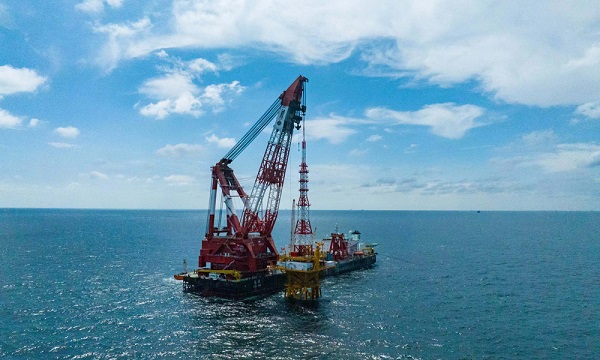
To realize the full life cycle operation and maintenance management of the observation platform, a total of 147 monitoring sensors, including corrosion sensors, fiber grating sensors, acceleration sensors, and inclinometers, have been placed on the wind measuring tower, modules, and jacket to carry out real-time monitoring of the platform. This observation platform boasts the largest number of monitoring sensors among domestic marine structures, and will establish digital twin models that simulate the overall responses of the observation platform under varying sea conditions and the structural stresses on key components. Based on digital twin technology, the observation platform will provide support for structural safety risk control and life cycle operation and maintenance management. The picture shows the Blue Whale completing the hoisting of the wind measuring tower of the observation platform. [Photo/sasac.gov.cn]
(Executive editor: Xie Yunxiao)